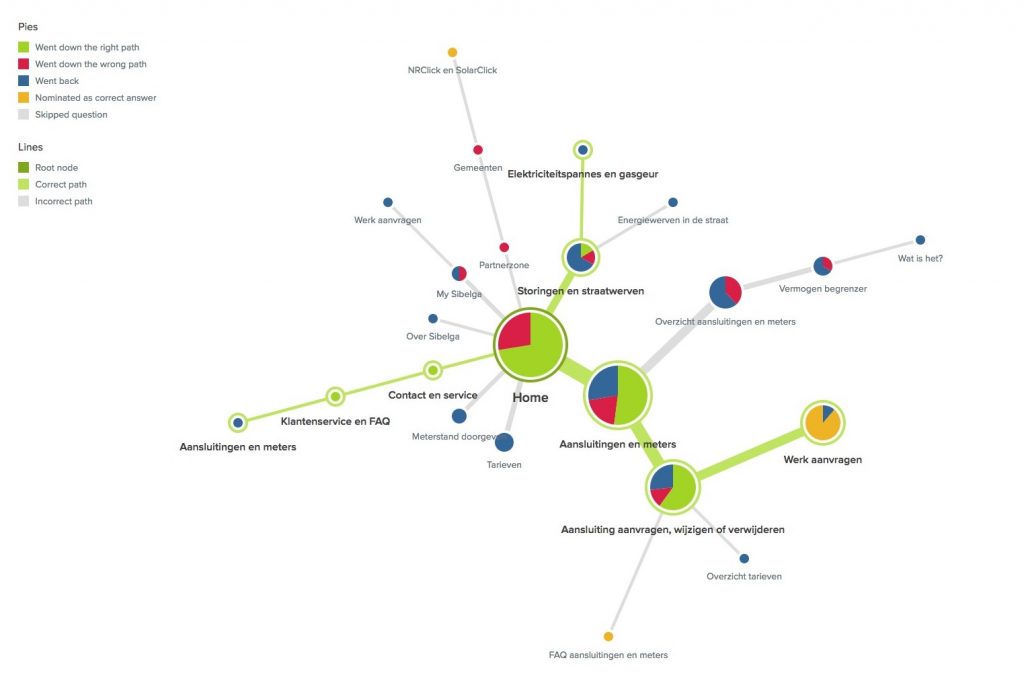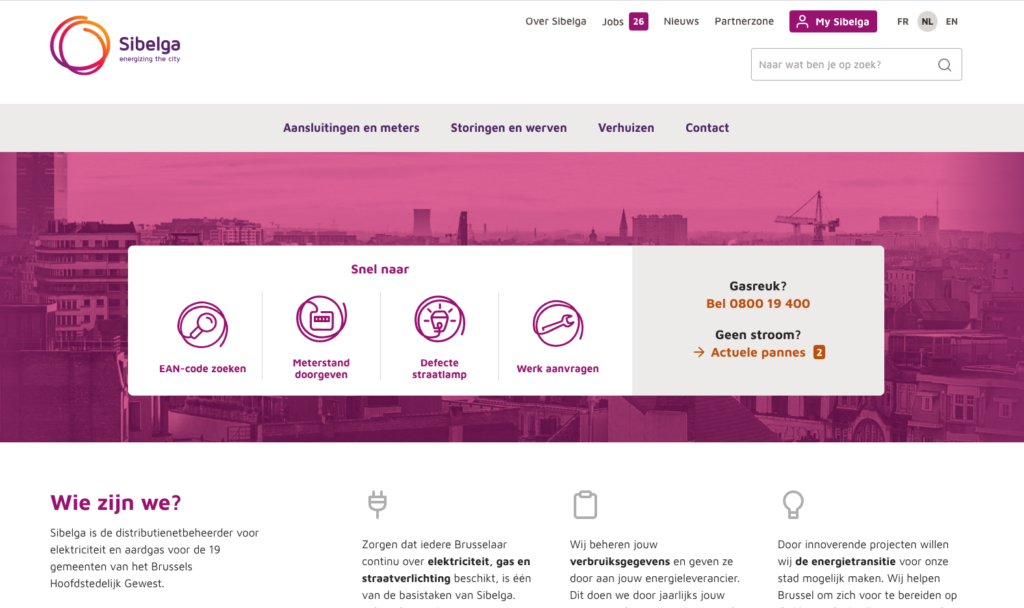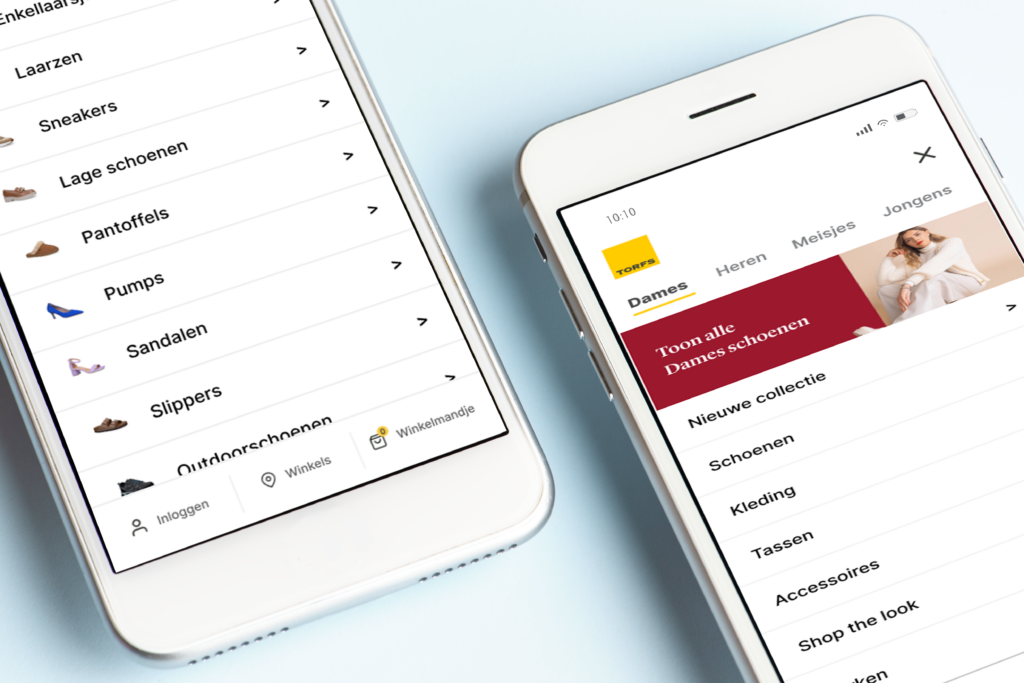Towards a user-centered Sibelga website
Sibelga is the only distribution network operator for electricity and natural gas in the 19 communes of the Brussels Capital Region. Via the website Sibelga provides all relevant information concerning energy to both consumers and professionals.
The goal
The new design for this content-rich website needed to be easier to navigate, more user-friendly and customer-focused. Our user-centered design approach puts the needs and the expectations of the end-users first in every part of the design process. Our task for Sibelga included the design and follow-up of the realization and implementation of their new website. After launching the new website we keep on improving by measuring the KPI’s and improving the flows and designs.
What we did
Approach
Digital strategy
At first, we determined the online goals and KPI’s for the new website during an interactive workshop with internal stakeholders . A baseline measurement was put in place with the collected information. This helped to interpret our future data analysis measurements.
Soon a second workshop was needed to gather insights about the goals, the tasks, the needs and pains of the different user groups. With the data collected during these workshops, personas were created. Subsequently goal-based customer journey maps were drawn for each of the personas. They visualize the touchpoints of the persona with Sibelga while achieving their goals.
The multi-channel content strategy that was developed, contains the digital strategy and a communication plan focused on the different target groups.
UX Analysis
An expert evaluation of the existing Sibelga website(s) and communication channels provided insights in the field of UX & digital marketing strengths and weaknesses. In addition, a competition analysis provided us with an overview of best practices with related recommendations.
Structuring & End User Validation
Using all information collected during the previous phases, we developed a general digital architecture. This answers the question: which channels or tools support the user at what time with what question?
After outlining this general structure, we focused on the Sibelga website. The different information flows aimed to achieve both the business and marketing objectives, as well as user objectives. This resulted in a first structure (information architecture) for the new site. To ensure that end users find their way in this new structure, we started online tree tests. A tree test evaluates a hierarchical category structure, or tree, by having users find the locations in the tree where specific tasks can be completed.
Using tree testing we were able to find out if:
- Our labels made sense to the end users,
- The content was grouped logically for them,
- They could find the information they want easily and quickly.

After a few iterations with end users and stakeholders, we came to a final version of the information architecture and we could start wireframing. These wireframes (page prototypes) were also validated with end users during user tests.
Finally, the validated and optimized wireframes were annotated as input for the future development party.
Continuous optimisation
Once the website was launched we start analyzing the collected data to see where we can improve the user experience. By using data collected via web analytics and Hotjar we gather insights about how users actually are using the website. Combined with insights from on-site questionnaires we focus on improving specific parts and functionalities. Design improvements are tested using A/B testing or user testing.

The results
Next steps
Together with the Sibelga team we keep on improving the website to guarantee the best possible user experience for the visitors and users of the Sibelga website. This includes detailed web tracking, actionable UX dashboards and optimisations to gather more user insights and make better decisions.


